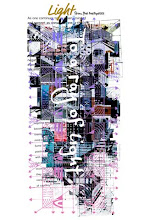As long as humans are driving cars manually, there will never be zero traffic accidents. Also, in Prout Village, there is no police force to crack down on drunk driving, so if there is no countermeasure there, tragic accidents will occur. We aim to prevent these and achieve zero traffic accidents. For this reason, all private cars will be fully automatic vehicles, with no manual driving capability. Residents will be transported from their residences to multi-purpose facilities by automated vehicles with a maximum speed of 20 kilometers per hour on the ground, from multi-purpose facilities to other areas by high-speed automated driving in underground tunnels, and then to other areas on the ground at a speed of 20 kilometers per hour. Facilities such as bullet trains and linear motors for long-distance travel could be considered.
This way, all residents will be able to specify their destination by cell phone. This will allow people all over the world, from children to the elderly, to travel anywhere for free, with as little chance of personal injury as possible.
The maximum speed of a self-driving car on the ground will be 20 kilometers per hour, and it will not go faster than that. If a pedestrian is hit by a car going 30 kilometers per hour, the fatality rate is about 10%; at 50 kilometers per hour, the rate is over 80%. In other words, the car should be driven at a speed of 20 km/h or less, and the probability of collision should be minimized by automatic braking. And even if you do hit one, the probability of death is much lower.
The walking speed of an adult is about 6 kilometers per hour, and that of a child is about 3.5 kilometers per hour. This means that the distance from the edge of the municipality to the center of the city is 2 kilometers, so it would take an adult 30 minutes to walk, but a car traveling at 20 kilometers per hour would take 15 minutes. There is no work that requires speed in Prout Village, and everyone takes it easy. This means that there is no need for fast cars, and safety is the first priority. This will bring the number of traffic accidents and fatalities in the municipality as close to zero as possible.
The self-driving car will be large enough to carry two people lying down, and will not have a driver's seat, so that everyone can sit facing inward. The reason for not having a driver's seat is that there are no police to crack down on drunk drivers, so that drunk people don't suddenly start driving. However, in some cases, it may be necessary to make a small turn or change the direction of the car. For such cases, a simple remote control function should be provided on a cell phone, like a radio controller.
In some cases, a person may be struck by a car going 20 kilometers per hour, and may die from a bad hit or fall. This could happen even at 5 km/h, which is slower than walking. In other words, it is a question of drawing a line between the maximum speed at which a car can function and the maximum speed at which fatal accidents can be reduced to zero. Therefore, for now, 20 km/h is the line that satisfies these two conditions, and before moving to Prout Village, residents will be asked to agree that they will be responsible for any accidents and deaths caused by self-driving cars and other municipalities.
In addition, there will be a lot of nature in Prout Village, but the day after a heavy rain or typhoon, trees may break and block the road. For this reason, we always keep an electric saw in the car. The person in the car then cuts the fallen tree, puts it on the side road, and moves on.





0 コメント